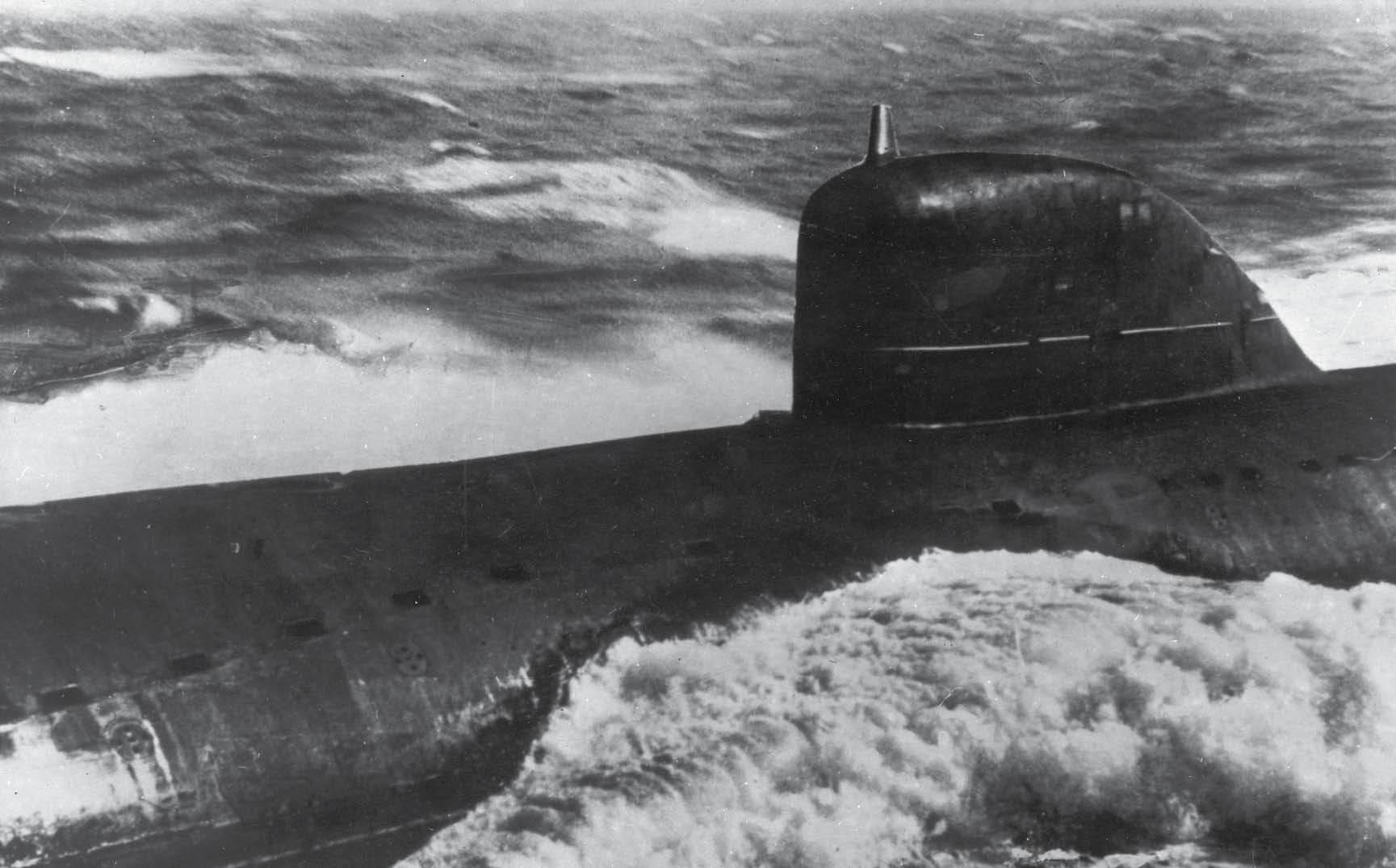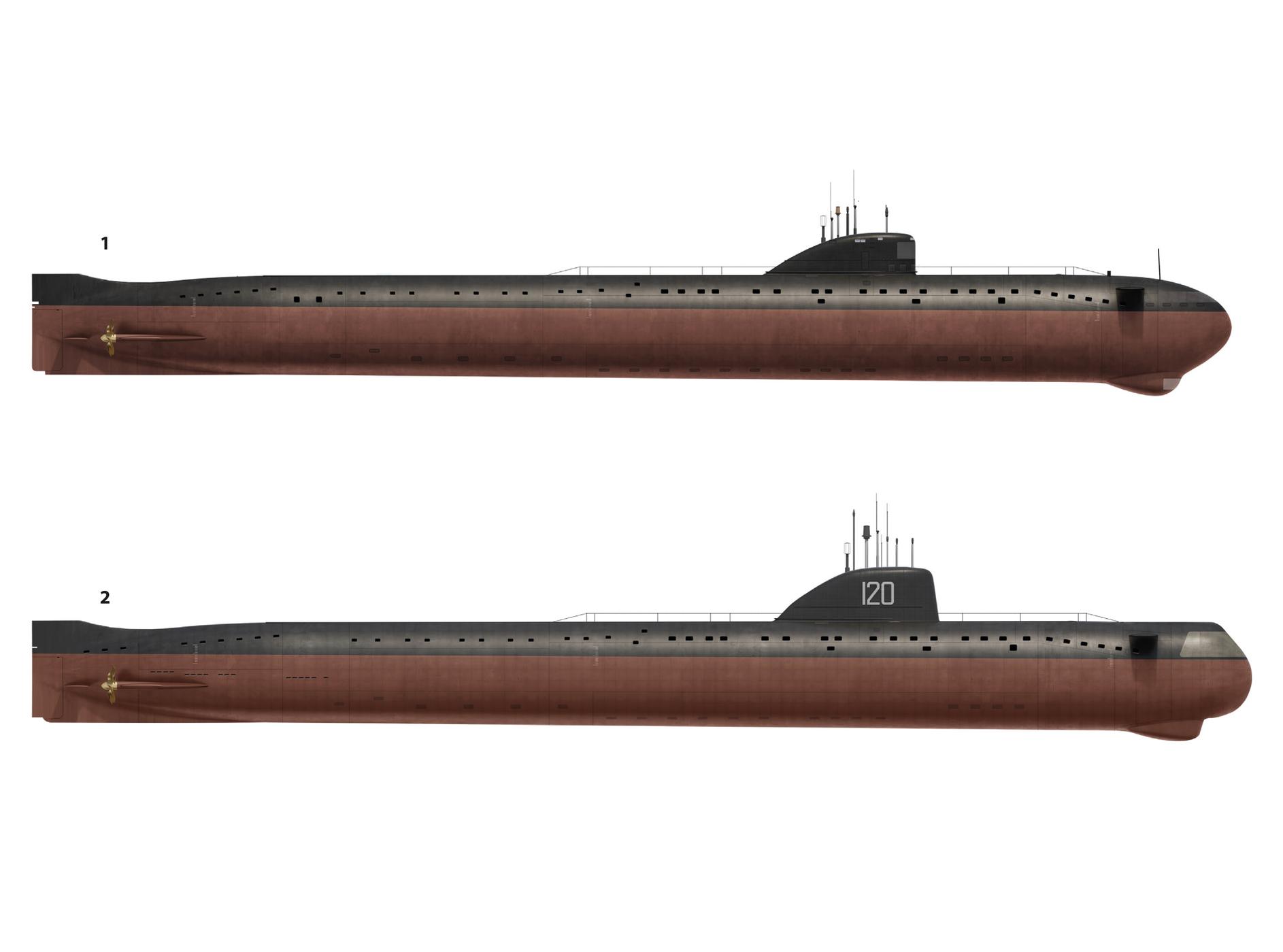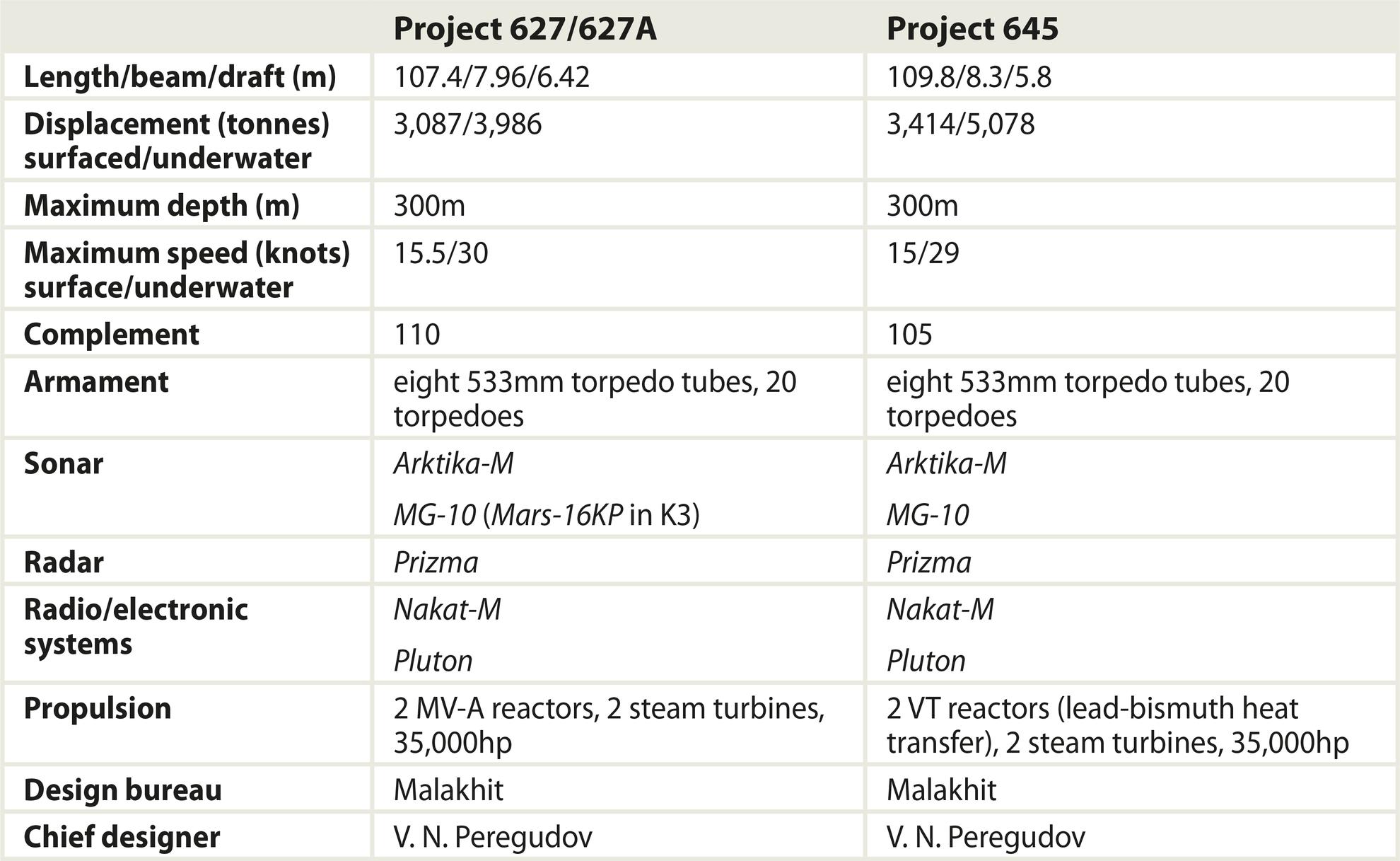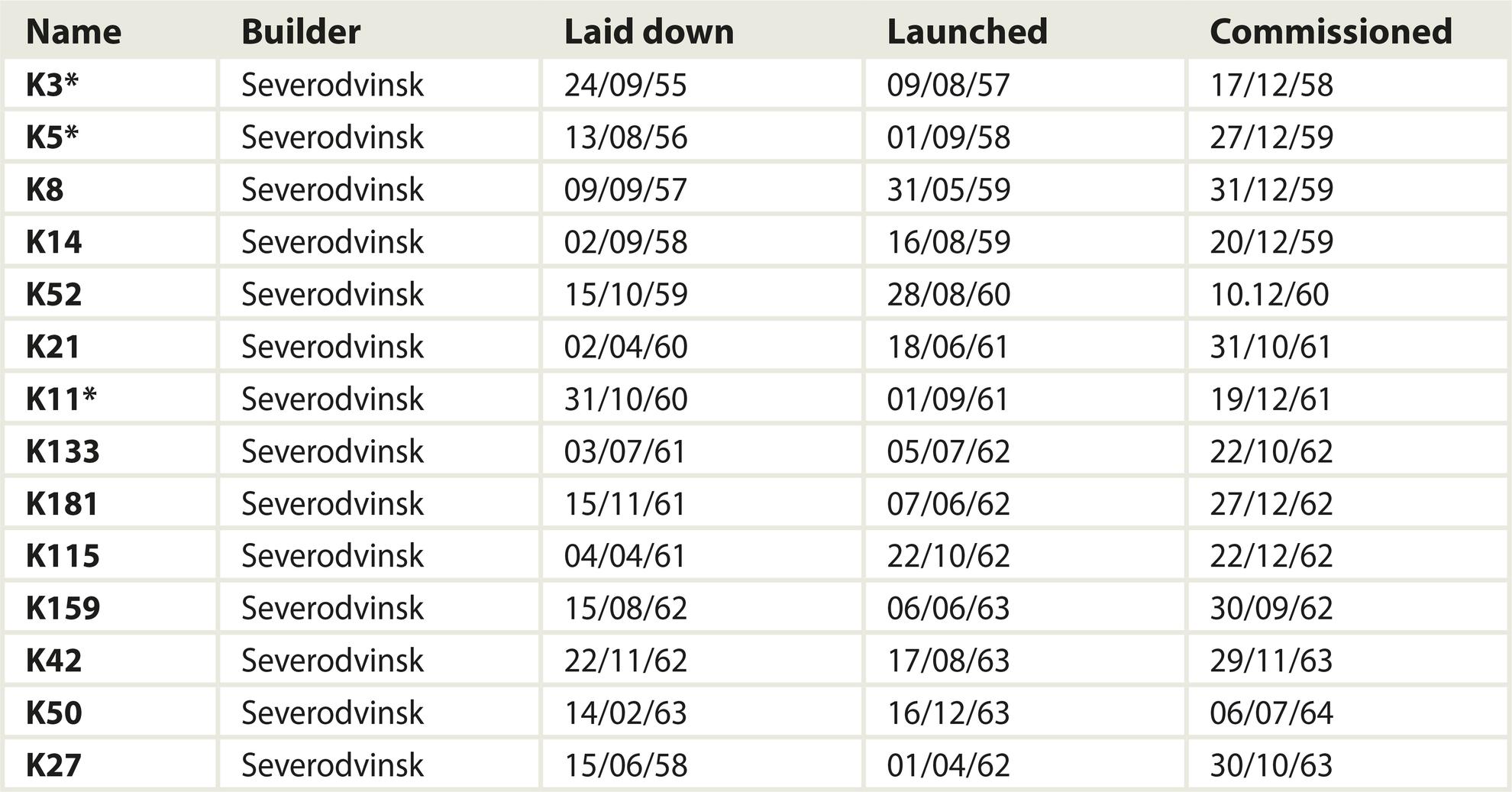
Leninsky Komsomol, the USSR’s first nuclear submarine, at sea. (pliskin1/Public domain)
The Soviet nuclear-powered attack submarine programme almost began by accident. Given Stalin’s direction that all nuclear research and development should focus on the nuclear bomb, scientists and engineers were forbidden from considering nuclear propulsion for submarines. Development work therefore began on a wide range of weapons that could deliver nuclear weapons, from cruise missiles and ballistic missiles, to a huge nuclear-tipped torpedo designed to destroy NATO military harbours and ports such as Gibraltar and Pearl Harbor. Design work started on a diesel-electric submarine armed with just one of these enormous torpedoes in the late 1940s. Eventually, lobbying by Soviet designers resulted in a meeting with the ageing Josef Stalin, and an agreement was reached that this submarine, with its armament of a single nuclear torpedo, should also be nuclear powered. This new nuclear-powered boat was designated Project 627 and was armed with almost nothing else other than this single unusual strategic weapon (the submarine did have two ordinary torpedo tubes, with no space for reloads, for self-defence). The designers came from the new design bureau SKB-143, which had been set up a few years earlier to design submarines with new propulsion. Their first design had been the experimental Project 617 (Whale) hydrogen peroxide-powered boat, but with completion of this vessel, the bureau’s whole attention turned to the new nuclear-powered boat.
A cylindrical hull shape was chosen in contrast to both the traditional bow-and-external-tanks submarine hull form, and the ‘teardrop’ shape used in the experimental US submarine Albacore which was completed in 1953.

Leninsky Komsomol, the USSR’s first nuclear submarine, at sea. (pliskin1/Public domain)
A deep-diving depth of 300 metres was specified, which required the creation of a new type of steel for the hull. The Central Research Institute of Metallurgy and Welding came up with the AK-25 high tensile steel that combined the necessary strength with flexibility required to withstand variable pressures on the hull. The design also included the distinctive ‘Limousine’-style conning tower with a rounded top and a ‘streamlined’ rear. During design development, the surface displacement of the submarine crept up from 2,700 tonnes to 3,050, whilst the crew increased from 70 to 85. Soviet submarine designers, mindful of the dangers of operating underwater, designed in a high reserve buoyancy which gave the submarine the ability to remain afloat on the surface with one compartment fully flooded. The submarine was also given a ‘double hull’ to provide some protection against a hull breach. The first generation of Soviet nuclear-powered submarines also had two reactors, two turbines and two screws, providing a measure of safety in the case of damage to one reactor. These additional safety features, which were not present in western submarines, meant that Soviet submarines were often larger and noisier than their NATO counterparts; but they undoubtedly saved the lives of many Soviet submariners in the various accidents that befell these boats during the Cold War. The November class had a reserve buoyancy of 30.5 per cent (compared to 16 per cent for the Nautilus, the first US nuclear-powered submarine), an underwater speed of 30 knots and was able to make a diving depth of 300m (in comparison to 210m for Nautilus).

A close-up of a November class sail structure at sea, showing the distinctive ‘Limousine’ shape with a streamlined aft section. (Getty Images)
The submarine was divided into nine watertight compartments, and efforts were made to improve crew habitability, given that the submarine would have operational autonomy for between 50 and 60 days. The final complement totalled 104, including 30 officers. In 1954, following the death of Stalin, the Chief of the Navy, Admiral Kuznetsov, saw no point in continuing with a strategic nuclear torpedo programme and its development was cancelled. The Admiral did, however, allow the continuation of the Project 627 submarine, but the bow section was replaced and a traditional torpedo armament was added totalling eight torpedo tubes and 20 torpedoes. From a standing start in 1952, the Soviet Navy was able to complete its first operational nuclear-powered attack submarine in only six years – an impressive feat of design, construction and the marshalling of resources. Later boats were built to the modified Project 627A design with the MG-10 passive sonar replacing the Mars-16KP and the Arktika-M moved from the conning tower to the upper bow.

The first illustration on this plate shows a submarine of the ‘production’ variant of the November class (Project 627A). The Novembers were the Soviet Union’s first class of nuclear-powered submarines, and despite a number of serious accidents during their service career, proved the type and provided the basis for later generations of nuclear-powered submarines. The prominent dome at the bottom of the bow of the submarine houses the cylindrical transceiver array for the MG-10 (Feniks) passive sonar. This replaced the Mars 16KP passive sonar in the first November class boat, K3. This newer passive sonar had, for the first time (for the Soviet Navy at least), a cylindrical array of transducers. This could theoretically provide an all-round detection capability and was, therefore, placed in a dome at the bottom of the bow in order to maximise the detection spread as far as possible. Despite some resistance from naval architects who feared that such a dome would produce drag on the submarine and cause docking problems, the domed sonar was introduced and proved successful. It could detect a surface ship moving at 15–18 knots, up to 7km away with the carrying submarine moving at up to 15 knots – a significant improvement on previous sonar sets.
The second illustration shows K27, the sole submarine of the Project 645 class. She was only in service for four years and western analysts did not differentiate her from her Project 627A half-sisters, so she was never given a NATO codename. K27 was the first Soviet submarine to have liquid-metal nuclear propulsion. A lead-bismuth alloy provided the medium by which the heat generated in the submarine’s nuclear reactors was transferred to steam turbines, via a series of pipes. Unfortunately, to keep the alloy in liquid form, either the reactors had to stay on permanently, or another form of heating had to be found. If the alloy ‘froze’ back to a solid, it would effectively destroy the ship’s propulsion by fusing with the metal piping in the reactor and in the steam turbine. It would be problems with her propulsion in 1968 that would eventually require the reactor to be shut off, destroying her propulsion system and causing her premature withdrawal from service. K27 was similar to the November class in most other ways, except that her torpedo-loading system was semi-automated, thus reducing the size of the crew. The number on her sail is a tactical number, relating to her current deployment, and could be changed with a change of basing or mission. Such numbers on submarines were phased out in the mid-1960s.
The Project 627A design was adapted in the late 1950s to launch two large P20 cruise missiles. This is described in more detail in the author’s New Vanguard 260: Soviet Cruise Missile Submarines of the Cold War (here–here). The P20 cruise missile was cancelled in 1960, and as a result, the single submarine under construction of this class was dismantled and rebuilt as the last Project 627A class vessel – K50.

Even though a standard water-cooled reactor had been chosen for the November class, it had been acknowledged that the more complex, but potentially more effective, liquid-metal reactor did have potential. In October 1955, the Soviet Council of Ministers approved the development of an experimental submarine with this form of advanced reactor. Developed from the November class, the single Project 645 boat was somewhat larger but had a similar hull form and conning tower. The liquid metal used (a lead-bismuth alloy) served as the medium by which the heat generated from the nuclear reactions in the reactor was used to heat steam which would then turn turbines. Liquid metal was a more efficient medium for heat exchange than the water used in most nuclear-powered submarines, but it did have one major drawback – the liquid metal had to be kept sufficiently hot for it to remain in liquid form. If it cooled and solidified, then the reactor would seize up and become permanently unusable. As a result, the reactor had to be kept running permanently, the only alternative being a sophisticated form of shore support which would keep the liquid metal hot at all times. The single Project 645 boat suffered a number of accidents and problems, the most serious of which resulted in her premature decommissioning in 1968. However, the liquid metal concept was perceived to have been sufficiently proven to enable its use in the second-generation Alfa (Project 705) class boats.

The sleek lines of K5, the second boat of the November class, and the first fitted with the MG-10 sonar. (Wikimedia Commons/Public domain)
One submarine was initially ordered of the November (Project 627) class as a prototype but, following the completion of the first American nuclear-powered submarine on 22 October 1955, the Soviet Council of Ministers approved the construction of a full class, even though the prototype boat, K3, had only just been laid down. A second sister ship, K5, was built to the same design, but the remaining 11 vessels were built to a slightly modified design, Project 627A. All ships in the class were built at Severodvinsk in the Soviet far north. Trials of K3 were broadly successful, but the boat’s faulty steam generators had to be rebuilt at short notice, a problem that had to be remedied in a number of vessels. The single Project 645 boat, K27, was also built at Severodvinsk, with delays to her completion resulting from hold-ups in the manufacturing of her experimental reactor systems.

* In-service modifications: Three boats of the class (K3, K5 and K11) had their reactors replaced with newer VM-AM types during refits.